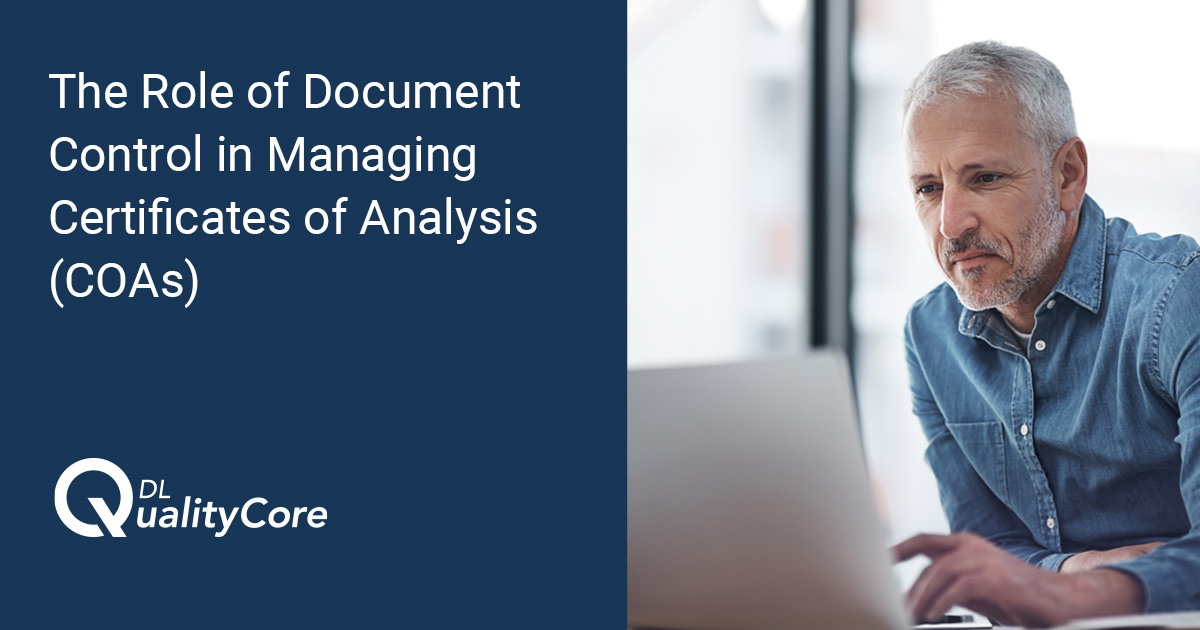In industries like pharmaceuticals, food production, and manufacturing—the Certificate of Analysis (COA) plays a critical role. It serves as an official document that certifies a product has met specified standards and regulatory requirements, ensuring safety, consistency, and reliability.
A structured document control system plays a crucial role in managing COAs, enhancing quality assurance, regulatory compliance, and operational efficiency.
What is a Certificate of Analysis (COA)?
A Certificate of Analysis is a document issued by a manufacturer or supplier that provides detailed information on the quality, composition, and compliance of a product. It typically includes:
- Product identification (name, batch/lot number, expiration date)
- Test results (purity, potency, microbial content, contaminants, etc.)
- Specification criteria (industry or regulatory standards the product meets)
- Authorized signatures (from quality assurance personnel)
COAs are essential in industries where products must adhere to stringent regulatory and quality requirements before distribution or use.
Why Document Control Matters for COAs
Effective document control ensures that COAs are properly generated, reviewed, stored, and accessed. Here’s why document control is critical in managing COAs:
- Compliance with Regulatory Requirements
Industries such as pharmaceuticals (FDA, GMP), food production (FDA, USDA, HACCP), and manufacturing (ISO 9001) require meticulous documentation of quality. A robust document control system ensures that COAs are securely stored and easily retrievable.
- Standardization and Accuracy
Without a structured document control process, errors and inconsistencies can arise in COAs. Automated workflows and filing helps ensure COAs are standardized, approved by the appropriate personnel, and accurately reflect the latest specifications and test results.
- Audit Readiness and Traceability
Regulatory bodies often request COAs as proof of product quality. A document control system maintains a clear audit trail, tracking who created, reviewed, and approved each COA. This traceability minimizes compliance risks and improves transparency during audits.
- Secure Storage and Controlled Access
COAs contain critical product data that must be securely stored. A document control system helps organizations maintain security by setting user permissions that prevent unauthorized access or modifications. Additionally, they implement retention policies to ensure COAs remain available for review.
How Document Control Software Improves COA Management
Document control software enhances COA management by:
- Automating workflows for COA creation, approval, and release.
- Ensuring version control to track updates and prevent the use of outdated or superseded COAs—whether you’re issuing them or retaining them from suppliers.
- Providing instant access to COAs for audits, inspections, and quality reviews.
- Reducing manual errors through proper filing and validation checks.
Strengthening COA Management with Document Control
A Certificate of Analysis (COA) is more than just a document—it’s a critical component of quality assurance and regulatory compliance. By leveraging a document control system, organizations can streamline COA management, reduce compliance risks, and enhance overall product quality.
For companies looking to strengthen their quality and compliance processes, adopting a document control solution like DL QualityCore can significantly improve COA handling, ensuring that products consistently meet industry standards and regulatory expectations.



